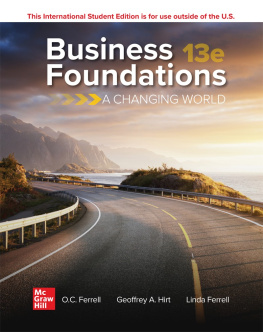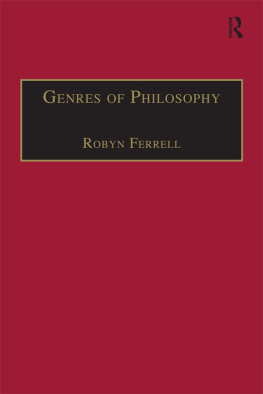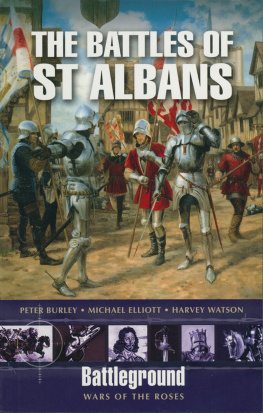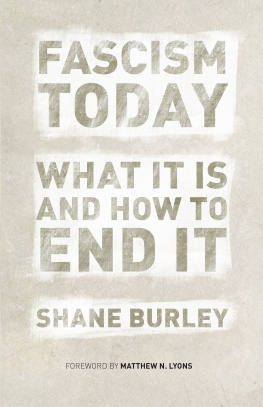BURLEY
Kentucky Tobacco in a New Century
ANN K. FERRELL
Copyright 2013 by The University Press of Kentucky
Scholarly publisher for the Commonwealth,
serving Bellarmine University, Berea College, Centre College of Kentucky, Eastern Kentucky University, The Filson Historical Society, Georgetown College, Kentucky Historical Society, Kentucky State University, Morehead State University, Murray State University, Northern Kentucky University, Transylvania University, University of Kentucky, University of Louisville, and Western
Kentucky University.
All rights reserved.
Editorial and Sales Offices: The University Press of Kentucky
663 South Limestone Street, Lexington, Kentucky 40508-4008
www.kentuckypress.com
17 16 15 14 13 5 4 3 2 1
Library of Congress Cataloging-in-Publication Data
Ferrell, Ann K., 1972-
Burley : Kentucky tobacco in a new century / Ann K. Ferrell.
pages cm. (Kentucky remembered : an oral history series)
Includes bibliographical references and index.
ISBN 978-0-8131-4233-3 (hardcover : acid-free paper)
ISBN 978-0-8131-4234-0 (epub) ISBN 978-0-8131-4235-7 (pdf)
1. Burley tobaccoKentucky. 2. Burley tobaccoKentuckyHistory. 3. Tobacco farmsKentucky. 4. Tobacco farmersKentuckyBiography. 5. Oral historyKentucky. 6. TobaccoSocial aspectsKentucky. 7. Social changeKentucky. 8. KentuckySocial life and customs. 9. Kentucky
Economic conditions. I. Title.
SB273.F47 2013
633.7109769dc23 2013001705
This book is printed on acid-free paper meeting the requirements of the American National Standard for Permanence in Paper for Printed Library Materials.
Manufactured in the United States of America.
| Member of the Association of
American University Presses |
Illustrations
MAPS
TABLES
FIGURES
PHOTOGRAPHS
Series Foreword
In the field of oral history, Kentucky is a national leader. Over the past several decades, thousands of its citizens have been interviewed. While oral history is, of course, only one type of source material, the very personal nature of recollection often discloses hidden aspects of history. Oral sources thus provide a vital thread in the rich fabric that is Kentucky history. Kentucky Remembered: An Oral History Series brings into print the most important of the state's collections of its citizens' oral history, with each volume focusing on a particular subject.
Burley: Kentucky Tobacco in a New Century is the twelfth volume in the Kentucky Remembered series, which explores the ways in which oral history connects the individual story to tradition and to the historical record. Kentucky's transitioning family farms were extensively documented in the 1990s for the Kentucky Family Farm Oral History Project. Over five hundred oral history interviews were recorded and archived, primarily documenting major agricultural, economic, and technological transitions. Ann K. Ferrell has continued this tradition of documentation, using oral history to explore the history and culture of tobacco farming as it has transitioned and declined on the Kentucky landscape. Her book Burley: Kentucky Tobacco in a New Century takes the stories of individual farmers and uses them as a lens to closely examine the meanings underlying the region's complex relationship with tobacco, providing a greater understanding of the farmers whose lives, family stories, and cultures are inextricably linked to this controversial crop.
James C. Klotter
Terry L. Birdwhistell
Douglas A. Boyd
A Note on Transcription
The process of transcribing the spoken word onto the page and presenting it for others to read is a harrowing one; none of us speaks in the complete, grammatically correct sentences that we might hope. Like others who face this challenge, I have struggled with how to represent the words of my interviewees in a manner that is respectful, readable, and true to their voices. In this spirit, I have made minor edits to the verbatim transcriptions in order to reflect the translation of the spoken word onto the page. This means that I have deleted utterances that are not germane to a speaker's meaning, including utterances such as uh and um, as well as repeated words and phrases (unless they are used for emphasis or some other specific meaning) and false starts. However, I have not followed standard rules of punctuation in most cases and instead use punctuation to reflect the cadence of talk. This means, for instance, that if a speaker clearly uttered an incomplete sentence (as speakers so often do) in order to emphasize something he or she said, I have left that sentence incomplete. In other instances, commas are used to denote brief pauses. The use of ellipses () indicates long pauses, and the use of an em-dash () indicates the speaker stopped in midsentence and redirected her- or himself toward a new thought. I only changed whole words in cases in which I replaced nonstandard verb-tense usage with standard usage (e.g., was to were). Leaving off the g at the end of a verb (goin') is common in spoken language, but here I have filled these letters in because such spellings tend to be a distraction to the reader. However, I have left words such as gonna (rather than going to) because although they are nonstandard, they are commonly used. Occasionally, I have added a word or phrase that was evident in the context of the interview but was not said directly, and in all such instances I have used [brackets] to denote additions.
Acknowledgments
No project can be completed without the input, support, and assistance of many individuals and institutions. This is especially true in the case of one based on ethnographic fieldwork with those who are the experts on the topic. Most of all, I am grateful to the farmers and farm family members, tobacco warehousemen, University of Kentucky College of Agriculture and Kentucky Cooperative Extension Service personnel, and many others who so generously and graciously shared their time and knowledge with me. All those I interviewed are listed in the bibliography, but I would particularly like to thank those who allowed me to visit with them repeatedly: Alice Baesler, Keenan Bishop, Jerry and Kathleen Bond, Mike Carter, Ben Crain, George Duncan, Clarence Gallagher, Martin and Kathy Henson, Lisa and Roger Perkins, Wilbert and Patsy Perkins, Roger Quarles, Jerry Rankin, G. B. and Jonathan Shell, and Marlon Waits. Not all those I learned from are cited by name in this book, but the knowledge I gained from every person I met over the course of this project informs this work.
I also owe a great debt to the many individuals who introduced me to farmers and others in their communities who are knowledgeable about tobacco, including Keenan Bishop, Edwin Chavous, George Duncan, Kara Keeton, Steve Moore, Carol Shutt, Charlene Smith, and Diana Taylor. I am extremely grateful to the many people who read earlier (some much earlier) versions of parts or all of this manuscript. This includes, first and foremost, Amy Shuman, Dorothy Noyes, Patrick B. Mullen, and Nan Johnson, as well as Brent Bjrkman, Erika Brady, George Duncan, Martin Henson, Robert Pearce, Martha Sims, and the anonymous readers who read it on behalf of the University Press of Kentucky. This project grew, evolved, and became stronger because of the suggestions, corrections, and feedback provided by all of these people. I also wish to thank Will Snell of the University of Kentucky College of Agriculture for answering data-related questions at many points over the course of this project and Bob Gray for assistance with the graphs included here. Papers related to this work were presented at annual meetings of the American Folklore Society and conferences sponsored by the Kentucky Oral History Commission and the Ohio State University Center for Folklore Studies over the years, and I am grateful for the comments from and conversations with those in attendance and those who served on panels with me, including Sheila Bock, Larry Danielson, Diane Goldstein, Patrick B. Mullen, Amy Shuman, C. W. Sullivan III, and Jason Whitesel. Thanks also to Katherine Chappell and Savannah Napier for assistance with bibliographic citations, to Afsaneh Rezaeisahraei for assistance in final preparations for publication, to Carol Sickman-Garner for her keen eye on the final manuscript, and to Anne Dean Watkins and Bailey Johnson at the University Press of Kentucky for their commitment to seeing this book through to completion. During a conversation about my research, Henry Glassie suggested that the most fitting title for this book is simply












